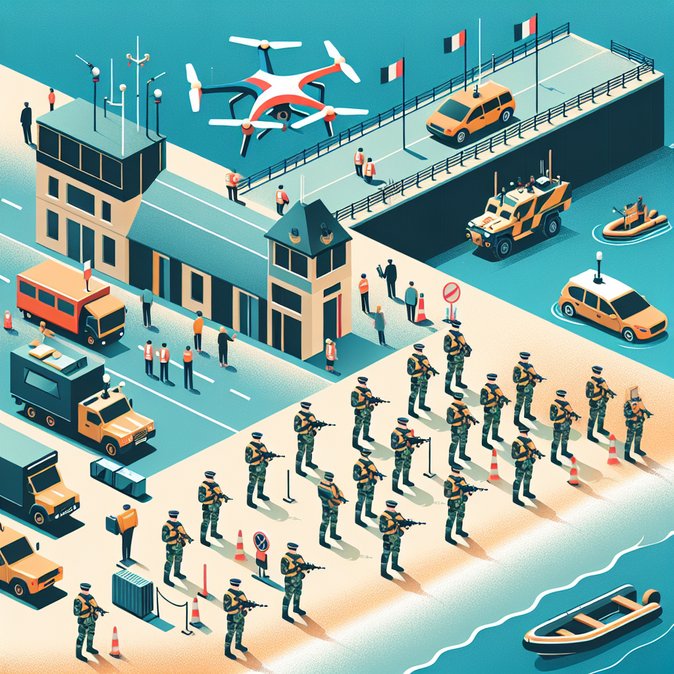
France and the United Kingdom signed a fresh bilateral security accord in Paris on 11 November 2025 aimed at stemming the growing flow of irregular Channel crossings. Under the €72 million package, France will double the number of police and gendarmerie patrols along the Pas-de-Calais coastline from 1 December and deploy an expanded network of drones, night-vision radar and mobile command vehicles. London will finance about 70 percent of the budget, while Paris provides most of the manpower and tactical assets.
What sets the 2025 deal apart from earlier agreements is the creation of a joint-response cell that can redeploy resources in real time once a migrant boat is detected. The accord also introduces a single investigative-training syllabus so that evidence gathered by French officers can be used in British courts—potentially making it easier to prosecute smuggling ringleaders even when arrests happen on French soil.
![UK–France Channel Deal Doubles Beach Patrols to Curb Small-Boat Crossings]()
For mobility and logistics managers the immediate impact will be operational rather than regulatory. Trucking firms moving fresh goods through Calais have been warned to expect random inspections of refrigerated trailers—favoured hiding places for migrants—that could add up to 30 minutes to a Dover run. Passenger-coach operators are advising clients to build extra buffer time into winter itineraries.
Politically, the deal buys both governments breathing space. London can claim progress on one of its most contentious domestic issues without breaching international obligations, while Paris can reassure voters that French taxpayers are not alone in footing the security bill. The real test will come in spring 2026, when crossing attempts usually spike. Should interceptions rise but successful crossings fail to fall, pressure is likely to mount for even tougher measures such as sea-borne push-backs—an option French maritime authorities have so far rejected on safety grounds.
Looking ahead, practitioners should monitor how the new surveillance kit will mesh with the EU’s Entry/Exit System (EES). Border police stationed at Dover and Folkestone say the upgraded drones will feed data into the same risk-analysis platform that flags overstayers, potentially giving compliance teams a far fuller picture of employee travel patterns across the Channel.
What sets the 2025 deal apart from earlier agreements is the creation of a joint-response cell that can redeploy resources in real time once a migrant boat is detected. The accord also introduces a single investigative-training syllabus so that evidence gathered by French officers can be used in British courts—potentially making it easier to prosecute smuggling ringleaders even when arrests happen on French soil.

For mobility and logistics managers the immediate impact will be operational rather than regulatory. Trucking firms moving fresh goods through Calais have been warned to expect random inspections of refrigerated trailers—favoured hiding places for migrants—that could add up to 30 minutes to a Dover run. Passenger-coach operators are advising clients to build extra buffer time into winter itineraries.
Politically, the deal buys both governments breathing space. London can claim progress on one of its most contentious domestic issues without breaching international obligations, while Paris can reassure voters that French taxpayers are not alone in footing the security bill. The real test will come in spring 2026, when crossing attempts usually spike. Should interceptions rise but successful crossings fail to fall, pressure is likely to mount for even tougher measures such as sea-borne push-backs—an option French maritime authorities have so far rejected on safety grounds.
Looking ahead, practitioners should monitor how the new surveillance kit will mesh with the EU’s Entry/Exit System (EES). Border police stationed at Dover and Folkestone say the upgraded drones will feed data into the same risk-analysis platform that flags overstayers, potentially giving compliance teams a far fuller picture of employee travel patterns across the Channel.









